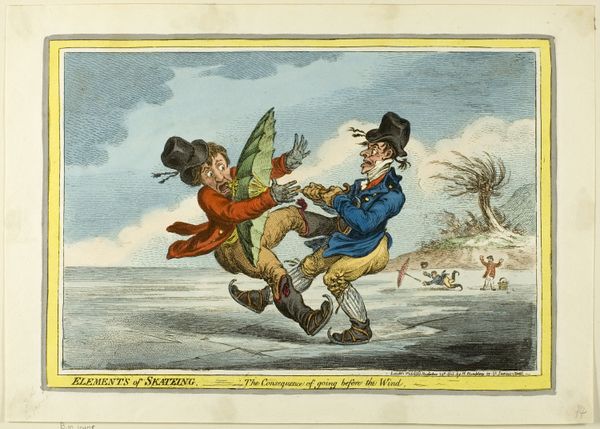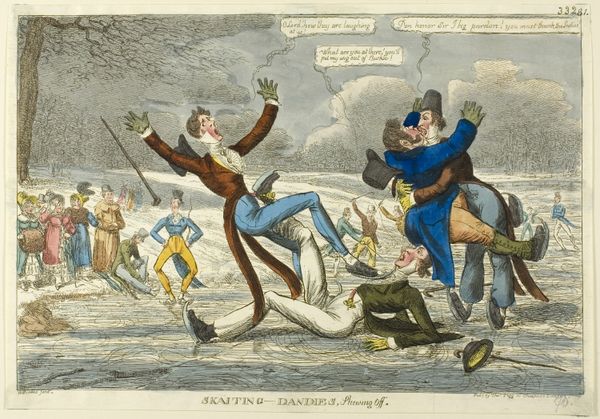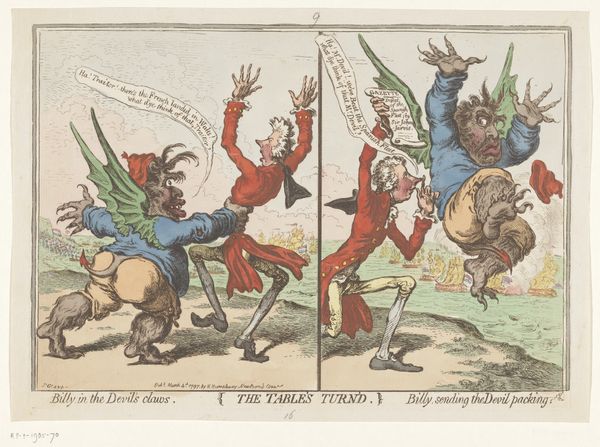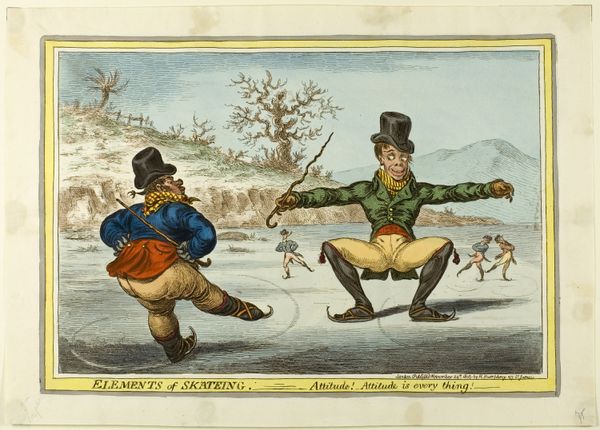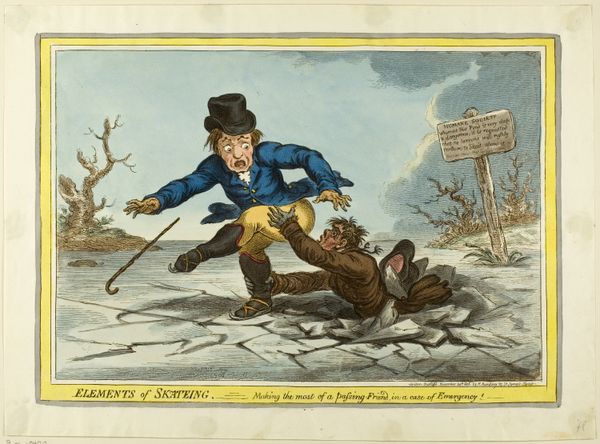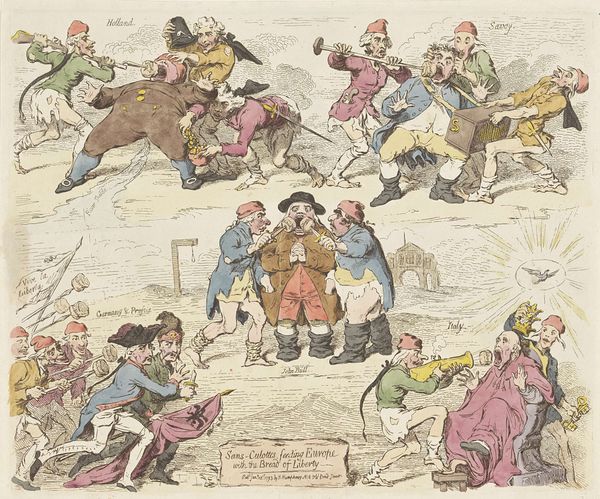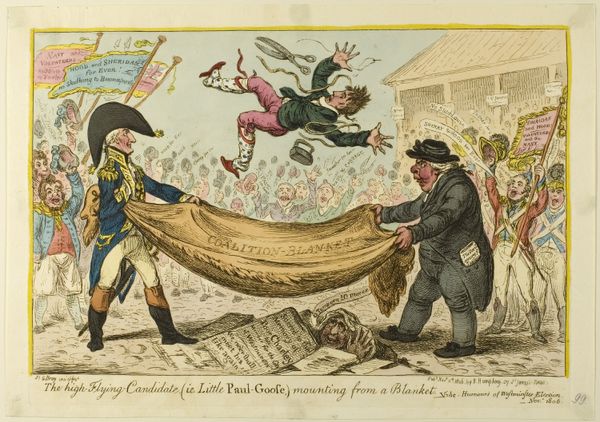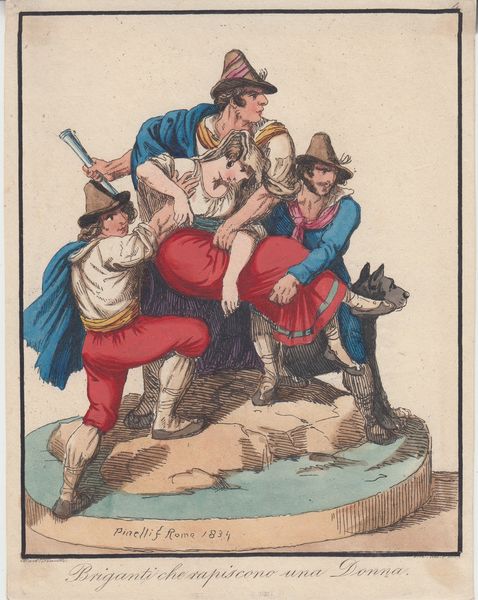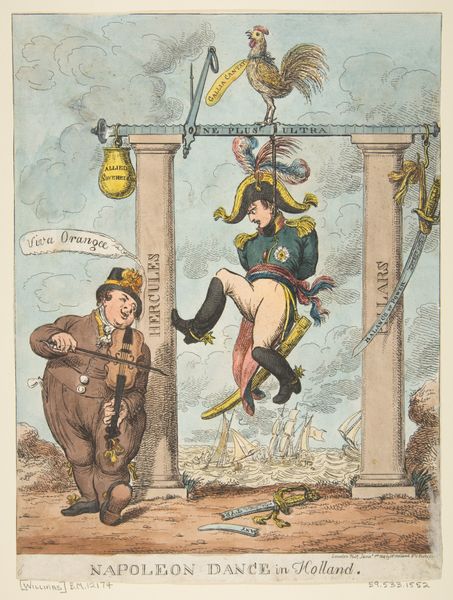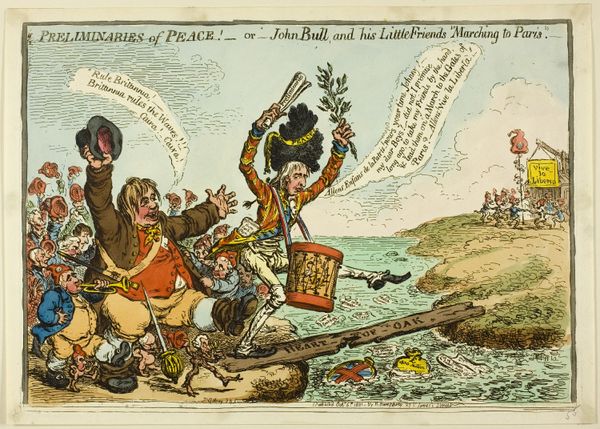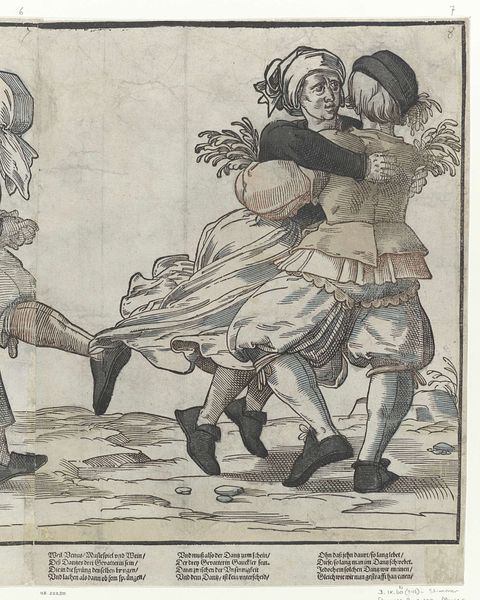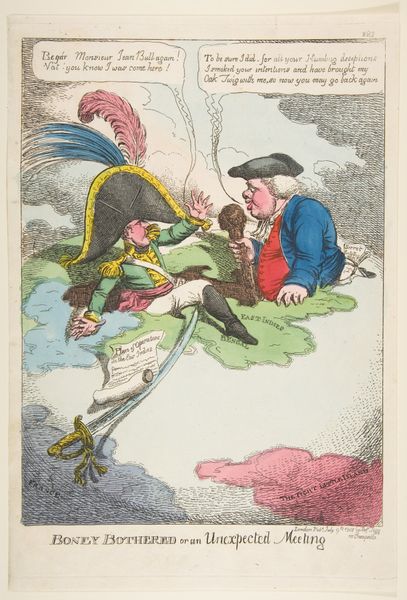
Elements of skateing: A fundamental Error in the Art of Skaiting 1805
0:00
0:00
Dimensions: 255 × 365 mm
Copyright: Public Domain
Curator: Immediately, what strikes me is the chaotic energy rendered within this seemingly classical etching. Editor: I agree. Let's delve into James Gillray's "Elements of Skateing: A fundamental Error in the Art of Skaiting," created in 1805, now held at the Art Institute of Chicago. It's an etching and print on paper. Curator: The artist's deliberate use of line to delineate each figure's exaggerated features – the contorted faces, wildly flailing limbs – speaks volumes about the intent behind this caricature. We get the Romantic sensibility toward extremes. Editor: Note the pointed skates – clearly custom-made and attached to buckled shoes, hinting at the status of the skaters as gentlemen pursuing a leisure activity afforded by a certain social position. This material specificity contextualizes the image as a critique of aristocratic pastimes. Curator: Absolutely. There’s a palpable tension in the way Gillray has orchestrated the composition, leading the viewer's eye along the precarious trajectory of these stumbling figures, creating a visual dance between elegance and absurdity. The formal arrangement really emphasizes this dual sensibility. Editor: And observe how the visible labor invested in the etching—the lines themselves, the layering to build tonal depth—mimics, perhaps intentionally, the precarious balance these gentlemen are trying, and failing, to maintain. The very act of creation parallels the subject matter. Curator: Do you think the title, with its suggestion of fundamental error, provides a crucial framework? How it directs our perception towards a satire on the societal facade of perfection versus human fallibility? Editor: It's tempting to consider it through that lens. However, it’s worth noting that paper during this period was still produced largely by hand, making this form of satire relatively expensive. Who could afford to own this, and what would they make of the satire? It seems pointed. Curator: This work is fascinating when observed by the sharp and confident use of line! Editor: Indeed. It invites us to consider not just the artistic merit, but the historical production circumstances and its role as both cultural commentary and a physical object of consumption.
Comments
No comments
Be the first to comment and join the conversation on the ultimate creative platform.
